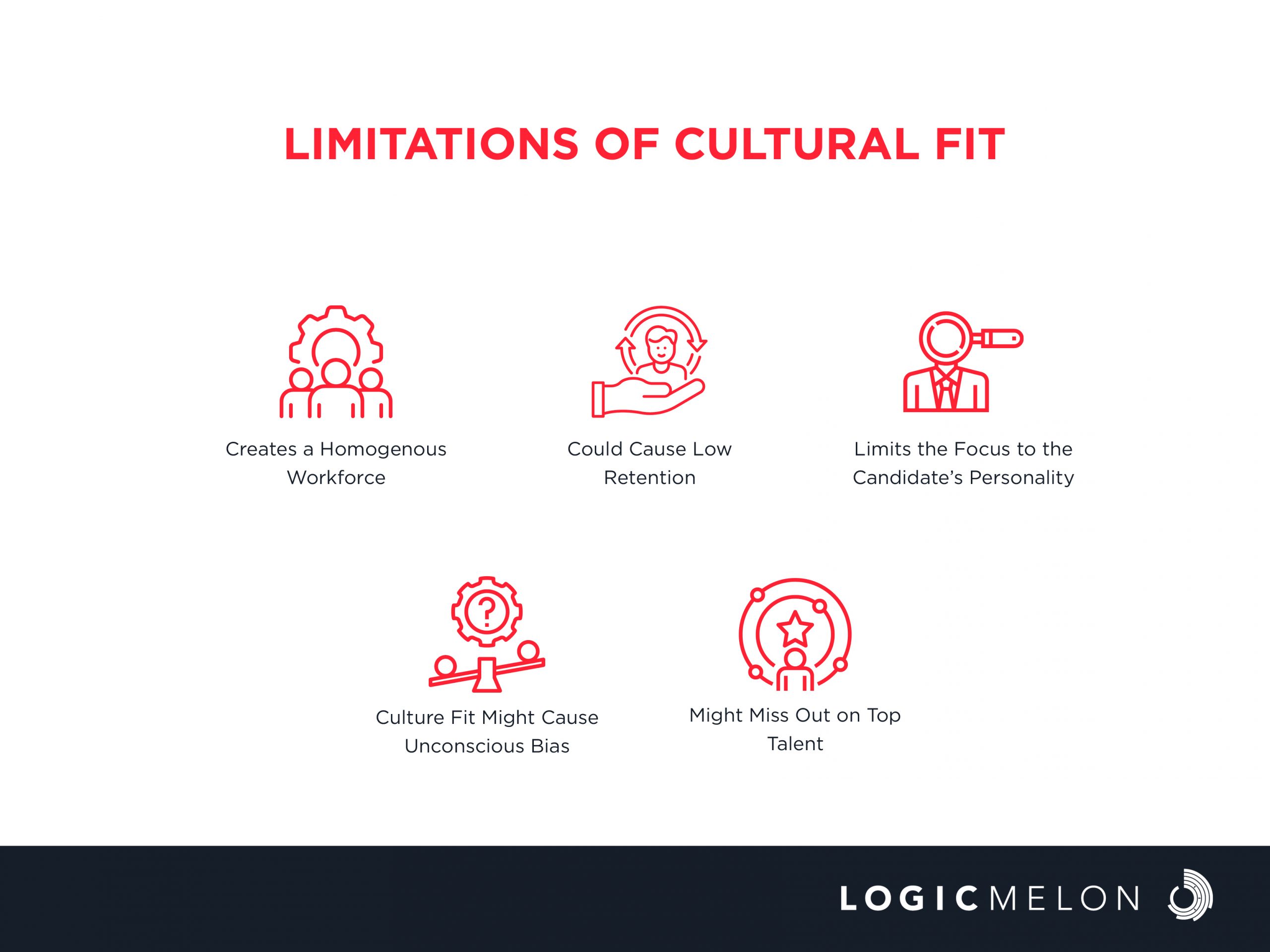Cultural Add vs Cultural Fit: Which to Choose?
Looking for the ideal candidate for your company is already challenging enough. You also need to ensure that there is no place for unconscious bias to creep into your recruiting process.
Your company’s culture plays a massive role in attracting candidates and helps you build a brand image. But, hiring for culture fit has always been the norm. Understanding cultural add vs cultural fit will help you with your hiring.
When it comes to assessing the candidate, two factors usually heavily influence the screening process. The cultural fit of the candidate and the organisational fit.
The organisational fit is regarding the candidate’s skill sets and how effectively they can perform their responsibilities and duties. To assess this, you can check the candidate with an assessment.
But, what does it mean to have a cultural fit? How does it affect your current team? To answer such questions, we need to have a deeper understanding of your company culture and about the various aspects it plays in your recruitment.
Since it is hard to assess the candidate for a cultural fit, sometimes it may lead to a cultural stagnation, meaning your company’s culture remains the same. To overcome this, organisations have started to adopt cultural ads that help overcome cultural fit limitations.
This article will help you in understanding about cultural add vs cultural fit and which one will benefit your company in the long run.
What Is a Cultural Fit?
Cultural fit is the process of checking the candidate’s likelihood to adapt to the organisation’s core company values and collective behaviour.
It is necessary to check the soft skills of the candidate and their personal goals and ambitions to assess them for cultural fit.
While it might be a challenge, you could assess the candidate for a cultural fit during the interview process.
A culture fit hire checks the candidate to see if they will work well in the company’s environment.
Limitations of Cultural Fit
While hiring for culture fit is a good idea, it could cause you to hire people who only fit with your existing culture and may never let you change the status quo.
This can leave room for bias since hiring for a cultural fit usually gives you candidates from a similar background and people who share similar beliefs.
This might not work out when you are committed to building a diverse team of employees from various backgrounds.
The following are some of the limitations of hiring for a cultural fit:

Creates a Homogenous Workforce
When you hire only for the candidate’s culture fit, you bring in more employees who share your values and those of the existing employees. This can hurt your diversity.
The workforce might comprise employees with the same personality, background, ethnicity, and gender.
To build a truly diverse workforce, you must hire diverse candidates from different cultures. This can create a work style where employees bring different perspectives to help you solve your challenges.
While having the same values can make it hard for your organisation to grow and bring innovations.
Could Cause Low Retention
When hiring for culture fit, you need to have a good understanding of your existing company culture. It is also necessary to project the same to the candidates.
The hiring manager, especially, needs to have a good understanding of the company’s values because it is their responsibility to check if the candidates align with these said values.
If the candidate misunderstands the company culture and accepts the offer, they might not feel as if they fit in, and may opt to leave the company.
Limits the Focus to the Candidate’s Personality
You must consider the candidate’s personality during the hiring process. But that does limit you from assessing various other aspects of the candidate.
To run a successful company, you need skilled candidates. You must look into your company’s hiring practices and ensure that your candidates are assessed on various factors.
Sometimes, hiring managers might feel that the candidate is a great culture fit, but the team members might not share the same view. This could lead to low employee morale.
Culture Fit Might Cause Unconscious Bias
The main problem with unconscious bias is, as the name suggests, it is hard to detect the bias against the candidate.
Since assessing the candidate for the cultural fit is subjective and based on the interviewer. It is easy for unconscious bias to come up in the assessment process.
It also hinders the hiring process to a certain extent. If the candidate is an excellent cultural fit, hiring managers automatically expect them to perform well in their jobs.
This is not always the case since the job indicator and the culture fit are two unrelated factors.
Might Miss Out on Top Talent
Hiring candidates based on cultural fit does not necessarily mean they are good performers. If the candidate falls short in the “culture fit” aspect but is exceptionally skilled, you could miss out on the top talent.
This can make you lose skilled candidates for your company. To thoroughly assess your candidates, use online assessments, blind recruitment practices, structured interviews, and check referrals.
What Is a Cultural Add?
Culture add is a practice of assessing candidates, where the recruiter tries to bring in new candidates with fresh ideas and perspectives to the company. This makes them look for candidates to fill cultural gaps, add new hires to the workforce, and promote diversity.
How Can Culture Improve Your Company Culture?
The main issue with culture fit is that candidates are often assessed based on the standards of the company’s values. This may not always help you in building a diverse workforce.
To truly stay inclusive and bring in a diverse workforce, you need to understand that the company culture should not remain the same. It should continue to evolve and help you improve the core culture.
The organisational values and your company culture play a huge role in attracting candidates. This is the first step in the talent acquisition process. It is also crucial to employer branding.
Candidates are more likely to go for a company with a good work culture rather than one that does not have proper brand recognition and a good work culture.
To ensure that your company culture does not continue the status quo and grows as the organisation grows, you need to look for creative candidates who would offer a cultural contribution to the company.
To achieve this, try replacing cultural fit with culture add. Instead of looking for candidates who are the right fit for your existing workforce, try looking for candidates who would bring a fresh perspective to the company and improve your culture.
When you hire for a culture add, you bring a candidate who can share their skills with the team, which can improve them and, as a result, help the company grow.
Sample Interview Questions to Assess Culture Add
To check the candidate for a cultural fit, you assess them based on personality questions to check if it aligns with the company’s values. To see if the candidate is a “culture add” the following questions might help you in the interview process:
- Describe a time when you helped your co-worker.
- What skills, passion, and hobbies set you apart for this role?
- Explain when you understood another person’s perspective to solve a problem.
- Tell us about a time when you creatively solved a problem.
- What are ways you can improve our company’s culture?
- Which do you think is more important: getting the job done quicker or getting the job done correctly?
- Tell me about a time when you took a professional risk.
- What are some mistakes you have made in the past, and how did you overcome them?
- How do you balance your work and home life?
- To you, what is most important in the workplace?
- How do you handle stress?
- How quickly can you learn something new and get good at it?
Frequently Asked Questions
1. How is culture fit different from culture add?
Culture fit is when you look for candidates who are an excellent fit to the existing workforce and would adapt quickly and work well in the present company culture. Culture add, on the other hand, seeks candidates who bring a fresh perspective and contribute something new to the company culture.
2. Why is it not good practice to hire for culture fit?
Hiring for a culture fit can make the company culture stagnant and may not let your organisation grow in regards to culture. This happens since you are looking for candidates who already possess the right personality for the existing workforce. It could also let unconscious bias creep in and hinder your diversity approach to hiring.
3. Why is a cultural add better than a cultural fit?
Rather than risking unconscious bias for your workforce, a better approach would be to hire people who could contribute something new to your company and positively influence the company culture. This not only helps you improve your retention but also improves your employer branding.
Final Thoughts
Successful companies have developed ways to handle bias and promote diversity in their workforce. It is necessary to keep your organisation growing. To do that, you need to attract top talent who might not possess the traits of a “cultural fit.” It is essential to check if the candidate brings something to the team. Also, it is important to reduce bias in your hiring process. A cultural add can help you with that and recruit people who would contribute to your existing team.
LogicMelon
Award-winning recruitment software that will find, attract, hire and analyse the way you want to work. At LogicMelon, we have experienced software recruitment marketing specialists to help you build effective recruitment solutions supported by the best customer service you’ll find anywhere!
Email: sales@logicmelon.com or call LogicMelon (UK) +44 (0) 203 553 3667 (USA) +1 860 269 3089
Recruitment Data Visualisation: Everything You Must Know
As a recruiter, you go through a lot of information daily. Recruitment data visualisation simplifies the complex data, making it easier to understand and act upon.
The Role of Soft Skills in Leadership Recruitment
In leadership development, soft skills are essential for identifying individuals who can not only manage but also inspire and guide teams to success.
ATS and CRM in Talent Acquisition
By utilising the strengths of ATS and CRM, organisations can create a comprehensive talent acquisition strategy that combines relationship building with an efficient hiring process.


